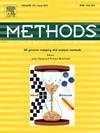Challenges, optimization strategies, and future horizons of advanced deep learning approaches for brain lesion segmentation
IF 4.3
3区 生物学
Q1 BIOCHEMICAL RESEARCH METHODS
引用次数: 0
Abstract
Brain lesion segmentation is challenging in medical image analysis, aiming to delineate lesion regions precisely. Deep learning (DL) techniques have recently demonstrated promising results across various computer vision tasks, including semantic segmentation, object detection, and image classification. This paper offers an overview of recent DL algorithms for brain tumor and stroke segmentation, drawing on literature from 2021 to 2024. It highlights the strengths, limitations, current research challenges, and unexplored areas in imaging-based brain lesion classification based on insights from over 250 recent review papers. Techniques addressing difficulties like class imbalance and multi-modalities are presented. Optimization methods for improving performance regarding computational and structural complexity and processing speed are discussed. These include lightweight neural networks, multilayer architectures, and computationally efficient, highly accurate network designs. The paper also reviews generic and latest frameworks of different brain lesion detection techniques and highlights publicly available benchmark datasets and their issues. Furthermore, open research areas, application prospects, and future directions for DL-based brain lesion classification are discussed. Future directions include integrating neural architecture search methods with domain knowledge, predicting patient survival levels, and learning to separate brain lesions using patient statistics. To ensure patient privacy, future research is anticipated to explore privacy-preserving learning frameworks. Overall, the presented suggestions serve as a guideline for researchers and system designers involved in brain lesion detection and stroke segmentation tasks.
脑损伤分割先进深度学习方法的挑战、优化策略和未来前景
脑损伤区域分割是医学图像分析中的一个难点,其目的是准确地描绘脑损伤区域。深度学习(DL)技术最近在各种计算机视觉任务中展示了有希望的结果,包括语义分割、目标检测和图像分类。本文概述了最近用于脑肿瘤和中风分割的深度学习算法,借鉴了2021年至2024年的文献。它根据最近250多篇综述论文的见解,突出了基于成像的脑损伤分类的优势、局限性、当前的研究挑战和未探索的领域。提出了解决阶级不平衡和多模态等困难的技术。讨论了从计算复杂度和结构复杂度以及处理速度方面提高性能的优化方法。这些包括轻量级神经网络、多层体系结构以及计算效率高、精度高的网络设计。本文还回顾了不同脑损伤检测技术的通用和最新框架,并强调了公开可用的基准数据集及其问题。展望了基于dl的脑损伤分类的开放研究领域、应用前景和未来发展方向。未来的方向包括将神经架构搜索方法与领域知识相结合,预测患者的生存水平,以及学习使用患者统计数据分离脑病变。为了确保患者的隐私,未来的研究有望探索保护隐私的学习框架。总的来说,提出的建议可以作为研究人员和系统设计人员参与脑损伤检测和脑卒中分割任务的指导方针。
本文章由计算机程序翻译,如有差异,请以英文原文为准。
求助全文
约1分钟内获得全文
求助全文
来源期刊

Methods
生物-生化研究方法
CiteScore
9.80
自引率
2.10%
发文量
222
审稿时长
11.3 weeks
期刊介绍:
Methods focuses on rapidly developing techniques in the experimental biological and medical sciences.
Each topical issue, organized by a guest editor who is an expert in the area covered, consists solely of invited quality articles by specialist authors, many of them reviews. Issues are devoted to specific technical approaches with emphasis on clear detailed descriptions of protocols that allow them to be reproduced easily. The background information provided enables researchers to understand the principles underlying the methods; other helpful sections include comparisons of alternative methods giving the advantages and disadvantages of particular methods, guidance on avoiding potential pitfalls, and suggestions for troubleshooting.
 求助内容:
求助内容: 应助结果提醒方式:
应助结果提醒方式:


